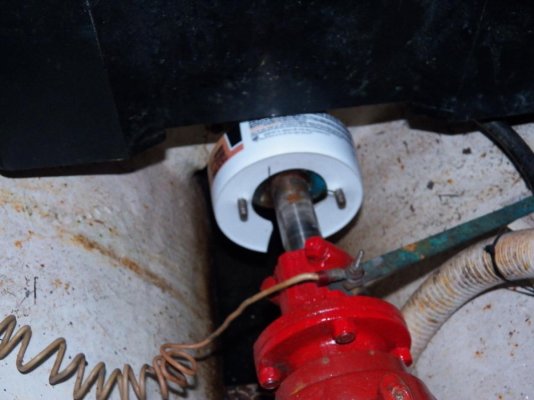Marco Flamingo
Guru
- Joined
- Jan 7, 2020
- Messages
- 1,110
- Location
- United States
- Vessel Name
- CHiTON
- Vessel Make
- Tung Hwa Clipper 30
I noticed that I have a scum stripe in my bilge in line with the drip from my stuffing box. The wood underneath the engine room decking (removed for the picture) had been soaked with salt spray over the years, as apparently was the surrounding area. The shaft coupling was just wire brushed and repainted because of the heavy rust.
It might only be a cosmetic issue, but I decided to reduce the area that might be subject to salt spray. I cut the bottom off of a little plastic bucket (old drywall spackle), made a hole and a slit for the shaft and two holes for the packing gland bolts. It is just a jam fit, easily removed when it comes time to repack the stuffing box.
It might only be a cosmetic issue, but I decided to reduce the area that might be subject to salt spray. I cut the bottom off of a little plastic bucket (old drywall spackle), made a hole and a slit for the shaft and two holes for the packing gland bolts. It is just a jam fit, easily removed when it comes time to repack the stuffing box.


